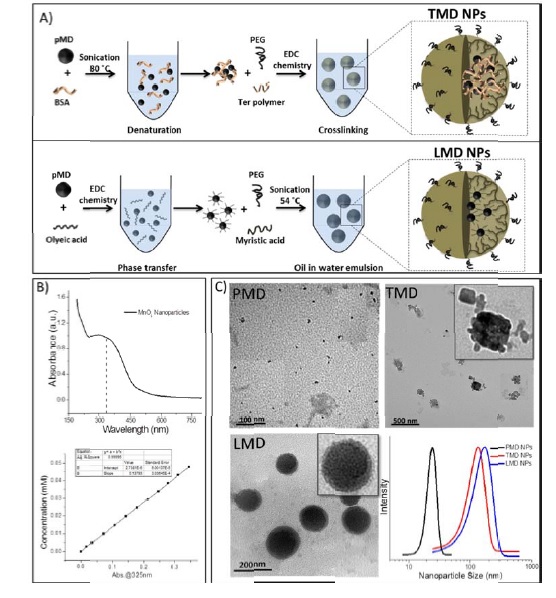Abbasi AZ, Gordijo CR, Amini MA, Maeda A, Rauth AM, DaCosta RS, Wu XY; Cancer Res. 2016 Nov 15;76(22):6643-6656
doi: 10.1158/0008-5472.CAN-15-3475.
Abstract
Hypoxia in the tumor microenvironment (TME) mediates resistance to radiotherapy and contributes to poor prognosis in patients receiving radiotherapy. Here we report the design of clinically suitable formulations of hybrid manganese dioxide (MnO2) nanoparticles (MDNP) using biocompatible materials to reoxygenate the TME by reacting with endogenous H2O2 MDNP containing hydrophilic terpolymer-protein-MnO2or hydrophobic polymer-lipid-MnO2 provided different oxygen generation rates in the TME relevant to different clinical settings. In highly hypoxic murine or human xenograft breast tumor models, we found that administering either MDNP formulation before radiotherapy modulated tumor hypoxia and increased radiotherapy efficacy, acting to reduce tumor growth, VEGF expression, and vascular density. MDNP treatment also increased apoptosis and DNA double strand breaks, increasing median host survival 3- to 5-fold. Notably, in the murine model, approximately 40% of tumor-bearing mice were tumor-free after a single treatment with MDNPs plus radiotherapy at a 2.5-fold lower dose than required to achieve the same curative treatment without MDNPs. Overall, our findings offer a preclinical proof of concept for the use of MDNP formulations as effective radiotherapy adjuvants. Cancer Res; 76(22); 6643-56.

